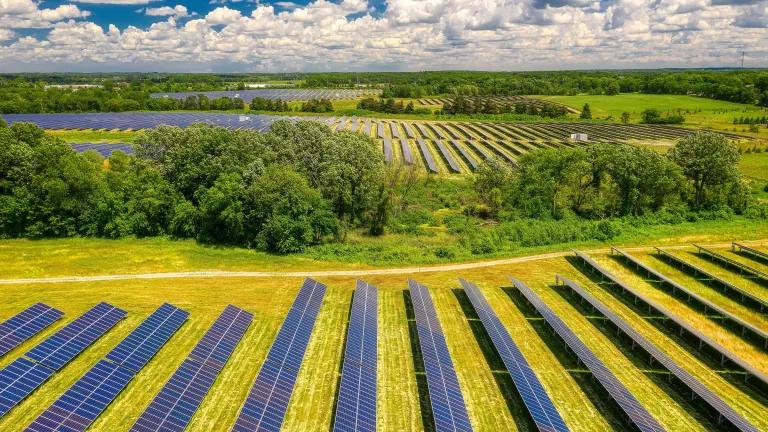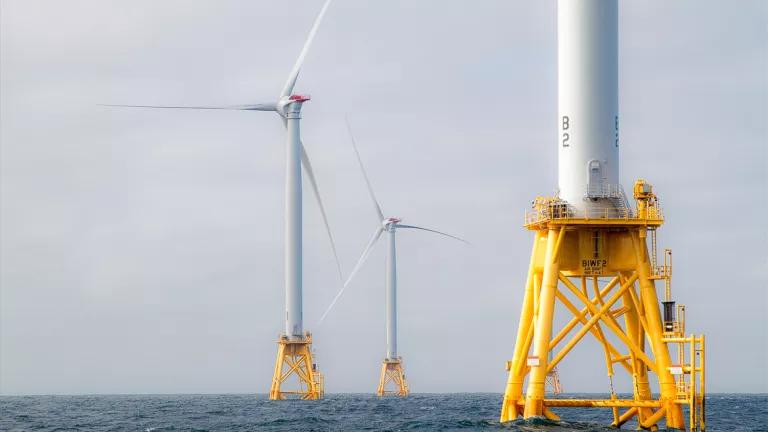New Reports Show Significant Consumer Savings from California Climate Policies

For decades now, the principal argument against taking action to mitigate climate change is that we can’t afford it. While this narrative has always distorted the truth relative to the costs of inaction (what we truly can’t afford), it is seized on time and again by the fossil fuel industry and their political allies to thwart progress on climate – even in a state like California that is leading the way.
But in assessing the impact of California’s climate initiatives under the banner of the Global Warming Solutions Act of 2006 (AB 32), now a decade into implementation, two new studies definitively put that notion to rest.
The first, released yesterday by Consumers Union (the policy and advocacy division of Consumer Reports), looks at the cumulative impact of California’s climate policies on household transportation costs. The key finding? Even after accounting for industry compliance costs, California households are projected to save up to $1,500 annually by 2030 thanks to lower annual fuel bills, and low-income households will experience the largest savings (as a share of income). The key reason? As the researchers, ICF International, put it – “focusing exclusively on vehicle and fuel pricing…can be misleading. Ultimately, consumer expenditures on travel are a function of vehicle and fuel pricing, as well as parameters such as vehicle efficiency and vehicle miles traveled.”
In other words, it’s the bottom line that counts. And thanks to improved vehicle efficiency, reduced travel times, and more competition and consumer choice being delivered by California’s suite of low- carbon transportation policies – including the Low Carbon Fuel Standard, Zero Emission Vehicle Program, and Sustainable Communities Strategies (SB 375) – Californians will spend significantly less of their overall budget on transportation costs in 15 years than they do today.
The second study, “Protecting the Most Vulnerable,” released today by the UCLA Luskin Center, draws the same conclusion from analyzing the impact of California’s greenhouse gas cap-and-trade program on low-income households’ energy bills. The cap-and-trade program is designed to put a price on carbon throughout the economy to incentivize lower emissions choices, not just by the state’s biggest polluters, but also in the prices consumers see to encourage cost-effective energy efficiency and conservation. But like in the transportation context, focusing on just commodity costs misses the bigger picture.
Under California’s program, the revenue raised from having utility rates reflect the carbon emissions costs of the power mix is returned to households twice annually in the form of a line item bill credit, called a Climate Credit. For electric customers of Sothern California Edison, for example, every household will receive a $38 bill credit in April and October in 2016 – regardless of how much electricity they consume (which, on average, benefits lower-income households who tend to consume less).
As a result, the analysis finds that representative low-income households will benefit financially from the cap-and-trade program, to the tune of an estimated $200 to $250 cumulatively by 2020. The same applies on the natural gas side, where low-income households are projected to net between $44 and $83 cumulatively by 2020. And the results hold irrespective of allowance prices and in the absence of low-income rate assistance programs.
(Still) Crying Wolf
As California prepares to chart its plan to achieve Governor Jerry Brown’s goal of a 40 percent reduction in greenhouse gas emissions below 1990 levels by 2030, we can expect the usual suspects to trot out the usual lineup of doomsday scenarios. Evidence to the contrary has not dissuaded them before, and I’m under no illusion these latest studies will either.
But for lawmakers who’ve been hearing more or less the same wolf cry for the past decade, it’s time to stop running up Aesop’s fabled hillside to check on the sheep. The only wolf they need fear is the one in sheep’s clothing that hides behind front groups, props up divisive wedge issues, and perpetuates misinformation campaigns to hold back our progress in building a healthier and more prosperous California.



